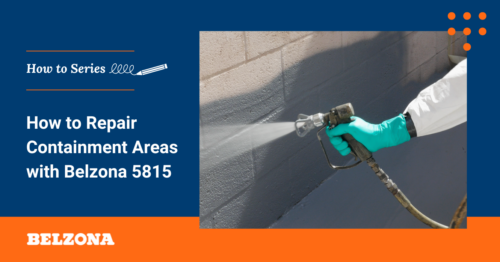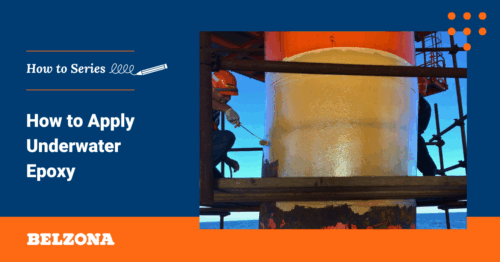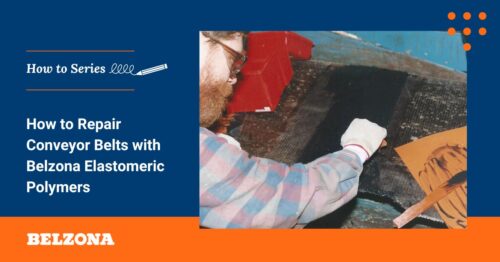Wind turbine leading edge protection has been one of the most talked about topics when it comes to wind turbine maintenance. The leading edge is responsible for the blade’s aerodynamic efficiency and power output. For this reason, the leading edge protection (LEP) gets the most attention nowadays.
In one of our previous posts “Maintaining Renewable Energy”, we touch upon the maintenance issues encountered in the wind power turbine as a whole, and the solutions Belzona offers for the repair and protection of each part of the turbine. In this post, our focus is the leading edge protection.
What is a leading edge?
The leading edge of a blade is the foremost edge of the airfoil or the part of the blade that first contacts air.
Leading Edge Wear and Tear
Cause of the leading edge damage can vary based on the terrain a wind farm is located in. Typically, leading edge defects can be caused by wet (rain, sleet, hail, snow) and/or dry (dust, abrasive air, bugs) atmospheric and environmental particulates. Lightning strikes and surface icing are two other atmospheric phenomena that might cause tear and, in some extreme cases, even rupture in the blade. The life expectancy of an unprotected leading edge at the manufacturer’s facility can be significantly decreased. According to Windy Systems Magazine, eroded leading edges will reduce the aerodynamic efficiency of the blades, and many sites have measured decreased power production by as much as 12%.
Leading Edge Protection
In recent years, more blade manufacturers have started offering various type of LEP including tapes and protective coatings. However, that is not the global trend. Many wind farms currently in operation face the challenge of protecting the damaged blades and keeping the turbines running and producing energy.
The solutions offered by Belzona are suitable to be applied on new build equipment as a preventative measure, as well as to repair and protect damaged equipment already in operation. In this post, we demonstrate the repair of a blade that had been damaged in service.
This system has been rigorously tested and fully validated in accordance with DNV-RP-0573 (Evaluation of erosion and delamination for leading edge protection systems of rotorblades) to allow for full assessment of the systems durability and rain erosion resistance. Full details of the testing, including reports from the independent evaluation (by AeroNordic ApS,Denmark), are available upon request.
Leading Edge Protection Drawing

Belzona’s wind-specific solutions can repair and protect the leading edge of turbine blades using Belzona 5711 and Belzona 5721. Eroded blades must first be rebuilt to the original profile, before being overcoated with a protective coating.
For this repair, we use Belzona 5711, Belzona 5721, Belzona 9111 (Cleaner/Degreaser), and a few tools from our machine shop. The first step is preparing the surface. Using a handheld sander, remove the existing coating and apply Belzona 9111 (Cleaner/Degreaser) to remove all loose particles and achieve optimal adhesion. After equalising the filling levels, a specialised mixing nozzle is then attached to a Belzona-issued cartridge containing Belzona 5711. The mixed product is applied onto the repair area using an electric cartridge gun. A flexible plastic former should then be used to smooth out the surface, sculpting the product to the blade’s original geometry.
After 30 minutes at 20°C (68°F), the repair can be overcoated with Belzona 5721 for long-lasting LEP. Belzona 5721 is mixed thoroughly for a minimum of two minutes until a uniform material is achieved, before decanting the mixed product into a cartridge for extended working life and ease of application. After ensuring that the product is flowing freely, beads are applied onto the leading edge of the blade before being smoothed with a flexible closed cell former. The product is then allowed to cure before the blade is returned to service; this typically takes five hours at 20°C (68°F).
VIDEO: BELZONA 5711 PRODUCT INTRODUCTION – REPAIR SOLUTION FOR WIND TURBINE BLADE DAMAGE
PHASE I: LEADING EDGE REPAIR WITH BELZONA 5711
VIDEO: BELZONA 5721 PRODUCT INTRODUCTION – COATING SOLUTION FOR WIND TURBINE BLADE DAMAGE
PHASE II: LEADING EDGE PROTECTION WITH BELZONA 5721

Completed Application
Frequently Asked Questions
What are the most effective coatings for wind turbine blade protection?
A high-performance wind turbine blade coating must withstand erosion caused by rain, UV exposure, and airborne particulates. Belzona 5721 is engineered to deliver long-term protection to leading edges, preserving efficiency and minimising maintenance requirements.
When tested to the standards outlined in DNV-RP-0573, the complete Belzona Leading Edge Protection (LEP) system comprising of Belzona 5711 and Belzona 5721, demonstrated outstanding durability, fatigue resistance, and long-term adhesion under severe environmental conditions. Even after extended weathering, the system retains its erosion-resistant properties, making it a dependable solution for in-situ repair and protection of wind turbine blades.
How can wind turbine blades be repaired after erosion damage?
Yes, leading edge erosion and impact damage on wind turbine blades is often repaired using Belzona 5711. Its extended working life and new cartridge format allows for precise contouring to the blade profile, simplifying the application process. This repair approach restores the structural integrity of the blade and provides long-term protection without the high cost and downtime associated with full blade replacement.
What causes damage to wind turbine blade?
Leading edge erosion is primarily caused by the high-speed impact of rain droplets striking the blade tips. Over time, this constant impact wears away the surface. In many cases, the original factory-applied coating is not durable enough to withstand these harsh conditions. As erosion progresses, it increases aerodynamic drag, leading to a loss of efficiency and reduced energy output from the turbine.
Contact Your Local Distributor to Learn More About How to Repair and Protect Boat Tanks

Richard Bywater is a Key Account Engineer at Belzona Ltd, one of the most established manufacturers of asset integrity solutions. With a Bachelor’s degree from the University of Leeds, Richard brings a unique blend of commercial insight and engineering expertise to his role.
His career at Belzona, beginning in 2018, has taken him around the globe, delivering talks, leading training seminars, and providing hands-on support to some of the world’s largest energy companies. His work focuses on implementing Belzona’s simple, safe, and effective solutions, ensuring optimal performance and longevity of critical assets. Over the years, Richard has been responsible for securing specifications for Belzona products with major energy suppliers, promoting a sustainable maintenance ethos within these companies.
Richard’s extensive travel and on-site experience have made him a highly sought-after expert in asset integrity, particularly in mitigating erosion and corrosion issues.













